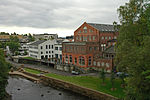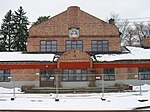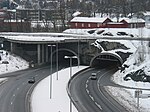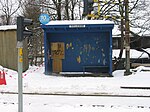Statkraft
1986 establishments in NorwayElectric power companies of NorwayEnergy companies established in 1986Government-owned companies of NorwayHolding companies of Norway ... and 2 more
Renewable energy companies of EuropeStatkraft
Statkraft AS is a hydropower company, fully owned by the Norwegian state. The Statkraft Group is Europe's largest generator of renewable energy, as well as Norway’s largest and the Nordic region's third largest energy producer. Statkraft develops and generates hydropower, wind power, gas power, district heating and solar power, and is also a player in the international energy markets. The company has 5300 employees in 21 countries with their headquarters located in Oslo, Norway.
Excerpt from the Wikipedia article Statkraft (License: CC BY-SA 3.0, Authors).Statkraft
Lilleakerveien, Oslo Ullern
Geographical coordinates (GPS) Address Nearby Places Show on map
Geographical coordinates (GPS)
| Latitude | Longitude |
|---|---|
| N 59.915308333333 ° | E 10.635533333333 ° |
Address
Lilleakerveien 6D
0283 Oslo, Ullern
Norway
Open on Google Maps










